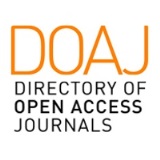Installations for Play and Community Art: an artistic and intercultural mediation experience with families from the Chinese community of Madrid
DOI:
https://doi.org/10.58265/pulso.7518Keywords:
Installations for play, Community art, Artistic mediation, Interculturality, Narrative researchAbstract
The study is based on the shared story and visual-textual reflection on an experience carried out at the Condeduque Center for Contemporary Culture in Madrid with family groups belonging to the Chinese community of this city. Its celebration was possible at the invitation of Xirou Xiao, cultural mediator and director of Tian Ma Xing Kong, a project designed to weave networks with neighbourhood organisations in the immediate environment and to carry out a contextualised artistic mediation in a socio-cultural institution that favours community actions in its programme. The objective is to narrate and signify an experience of artistic and intercultural mediation from the participation of mixed families (Chinese Spanish) and the collaboration of university students of Social Education. It was conceived as a community art action framed in the original proposal of the Installations for play, a playful context and intersubjective space of relationship configured with specific objects offered in a transformable space inspired by the aesthetics of contemporary art. The account of the event and the following research proposal are presented through documentation constructed through image-word narratives that recognize and give meaning to the symbolic and relational actions that took place in the encounter as a manifestation that generates metaphors of life with others.
Downloads
References
Abad-Molina, J. (2009). Arte Comunitario. IN-FAN-CIA: educar de 0 a 6 años. 116, 10-18.
Abad-Molina, J. (2013). Imagen-palabra: texto visual o imagen textual en Actas del Congreso Iberoamericano de las Lenguas en la Educación. (97-104). OEI y MEC.
Abad-Molina, J. y Ruiz de Velasco-Gálvez, Á. (2020). Experiencias de arte comunitario: cuerpo-objeto-espacio-palabra. En Raquejo, T. (coord.). El arte de corporeizar el entorno: prácticas artísticas para una pedagogía del sentir (137-153). Mc Graw Hill.
Atkinson, P. y Coffey, A. (2003). Encontrar el sentido a los datos cualitativos. Estrategias complementarias de investigación. Universidad de Antioquia.
Aucouturier, B. (2004). Los fantasmas de acción y la práctica psicomotriz. Graó.
Barbosa, A. M. (2002). Arte, educación y reconstrucción social. Cuadernos de Pedagogía, 311, 56-58.
Bourriaud, N. (2006). Estética relacional. Adriana Hidalgo.
Carnacea, À. y Lozano, A. coords. (2011). Arte, Intervención y Acción Social. La creatividad transformadora. Editorial Grupo 5.
Droit, R-P. (2018). Volver a ser niño. Experiencias de filosofía. Paidós.
García-Huidobro, R.; Freire, M. (2023). Hacia prácticas artísticas de mediación en contextos sociales. Arte, Individuo y Sociedad, 35(3), 993-1018. https://doi.org/10.5209/aris.85576
Giménez, C. (2019). Teoría y Práctica de la Mediación Intercultural. Reus editora.
Fernández, C. (2003). Psicologías sociales en el umbral del siglo XXI. Fundamentos.
Huizinga, J. (1972). Homo ludens. Alianza.
Irwin, R. L. (2013). La práctica de la a/r/tografía. Educación y Pedagogía, 25 (65-66), 106-113.
Klein, M. (1987). El psicoanálisis de niños. Paidós.
Marín, R. y Roldán, J. (2012). Metodologías artísticas de investigación en educación. Aljibe.
Martínez, S. (2022). La mediación artística en entornos universitarios: lo corporal, lo emocional y lo performático. Arteterapia. Papeles de arteterapia y educación artística para la inclusión social. 17, 17-48. https://doi.org/10.5209/arte.77905
Mörsch, C. (2016). Contemporary Curating and Museum Education. Transcript Verlag.
Moreno, A. (2016). La mediación artística para la transformación social, la inclusión social y el desarrollo comunitario. Octaedro.
Ossa, C. y cols. (2021). Didácticas del acontecimiento. Universidad de Chile.
Palacios, A. (2009). El arte comunitario: origen y evolución de las prácticas artísticas colaborativas. Arteterapia. Papeles de arteterapia y educación artística para la inclusión social. 4, 197-211.
Ricoeur, P. (2013). La metáfora viva. Trotta Editorial.
Rodrigo, J. y Collados, A. (2015). Retos y complejidades de las prácticas artísticas colaborativas y las pedagogías colectivas. Pulso. Revista de Educación. 38, 57-72. https://doi.org/10.58265/pulso.5071
Ruiz de Velasco-Gálvez, Á. y Abad-Molina, J. (2019). El lugar del símbolo, el imaginario infantil en las instalaciones de juego. Graó.
Ruiz de Velasco-Gálvez, Á. y Abad-Molina, J. (2020). Interrelación entre el espacio y las acciones en las Instalaciones de Juego. Pulso. Revista de Educación. 43, 175-192. https://doi.org/10.58265/pulso.4805
Ruiz de Velasco-Gálvez, Á y Abad-Molina, J. (2021). Objetos y creación simbólica en las instalaciones de juego. Revista del IICE. 49, 93-106.
Ruiz de Velasco-Gálvez, Á. y Abad-Molina, J. (2023). Las Instalaciones de Juego como espacio intersubjetivo de relación. Arteterapia. Papeles de arteterapia y educación artística para la inclusión social. 18, 1-10. https://doi.org/10.5209/arte.81741
Schafer, R.M. (2013). El paisaje sonoro y la afinación del mundo. Intermedio.
Winnicott, D.W. (2006). Realidad y juego. Gedisa.
Xiao-Xirou (2025). Cangrejo Pro: la performance colectiva y mujeres-jóvenes-chinas en Madrid. Tesis inédita, Facultad de Bellas Artes de Madrid.
Downloads
Published
How to Cite
Issue
Section
License
Copyright (c) 2025 Pulso. Revista de educación

This work is licensed under a Creative Commons Attribution-NonCommercial-NoDerivatives 4.0 International License.
This journal offers immediate open access to its content based on the idea that offering readers free access to research favours a global exchange of knowledge.
Papers are published in the electronic version of the journal under a Creative Commons License: Attribution-NonCommercial-No derivatives 4.0 International
Authors are allowed and encouraged to promote the post-print version (reviewed and accepted for publication version) of their work online before publishing them. This favours their earlier circulation and dissemination and thus a possible increase in their citation and reach among the academic community.













